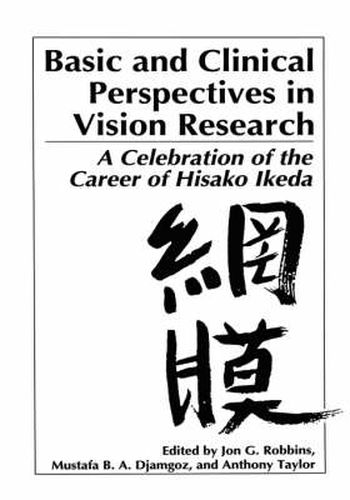Readings Newsletter
Become a Readings Member to make your shopping experience even easier.
Sign in or sign up for free!
You’re not far away from qualifying for FREE standard shipping within Australia
You’ve qualified for FREE standard shipping within Australia
The cart is loading…






This title is printed to order. This book may have been self-published. If so, we cannot guarantee the quality of the content. In the main most books will have gone through the editing process however some may not. We therefore suggest that you be aware of this before ordering this book. If in doubt check either the author or publisher’s details as we are unable to accept any returns unless they are faulty. Please contact us if you have any questions.
I have been asked to write a brief foreword to this volume honoring Hisako Ikeda, providing a review of the accomplishments in our field over the past four decades, when Hisako was an active participant. This I am delighted to do. It has been a most exciting time in vision research and Hisako has been right in the middle of much of the excitement, publishing on a wide variety of topics and providing much new data and many new insights. Hisako’s research career can be divided by decades into four quite distinct areas of inquiry. In the 1950s, as a student in Japan, her research interests were psychophysical in nature, and she was concerned with visual illusions, figural aftereffects, and motion detec tion. In the 1960s, after her move to London, she began electrophysiological studies. Much of her work in the 1960s was concerned with the electroretinogram (ERG), its components, and the use of this electrical response for evaluating spectral sensitivities of the eye and retinal degenerations. This work represented the beginning of her electrodiagnostic clinical work, which continued until her retirement.
$9.00 standard shipping within Australia
FREE standard shipping within Australia for orders over $100.00
Express & International shipping calculated at checkout
This title is printed to order. This book may have been self-published. If so, we cannot guarantee the quality of the content. In the main most books will have gone through the editing process however some may not. We therefore suggest that you be aware of this before ordering this book. If in doubt check either the author or publisher’s details as we are unable to accept any returns unless they are faulty. Please contact us if you have any questions.
I have been asked to write a brief foreword to this volume honoring Hisako Ikeda, providing a review of the accomplishments in our field over the past four decades, when Hisako was an active participant. This I am delighted to do. It has been a most exciting time in vision research and Hisako has been right in the middle of much of the excitement, publishing on a wide variety of topics and providing much new data and many new insights. Hisako’s research career can be divided by decades into four quite distinct areas of inquiry. In the 1950s, as a student in Japan, her research interests were psychophysical in nature, and she was concerned with visual illusions, figural aftereffects, and motion detec tion. In the 1960s, after her move to London, she began electrophysiological studies. Much of her work in the 1960s was concerned with the electroretinogram (ERG), its components, and the use of this electrical response for evaluating spectral sensitivities of the eye and retinal degenerations. This work represented the beginning of her electrodiagnostic clinical work, which continued until her retirement.